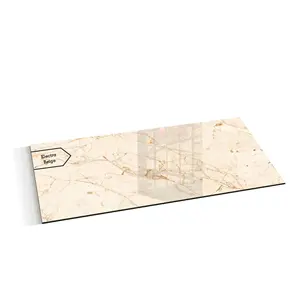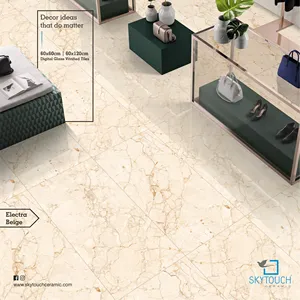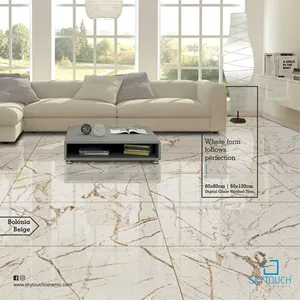(46655 products available)





































































































































































































India marble price may vary according to the different types of marble available. Here are some of the most commonly known types:
Makrana Marble:
This is one of the most famous marble types in India. It was used in the Taj Mahal construction. This marble is known for its white color and beautiful patterns that are brown or black. The marble is also famous for its long-lasting ability. Because of these features, Makrana marble price in India tends to be higher than that of other types. The marble is mostly used for making sculptures and in luxurious building constructions.
Rajkot Marble:
Rajkot marble is popular for its unique patterns and colors, which include grey, white, and brown. It is also very shiny and smooth. This marble is mainly used in the construction of walls and floors and for making countertops. The marble is readily available, making the Rajkot marble price to be more affordable than that of other types.
Green Marble from India:
This type of marble comes in different shades of green. It is also known for its beautiful and unique patterns. Indian green marble is mainly used for decorative purposes, such as making sculptures, tables, and decorative walls. Because of its beautiful appearance, the green marble price is relatively high.
Brown Marble from India:
Indian brown marble comes in different shades of brown and is very smooth and shiny. The marble is used for many applications, such as countertops, floors, and walls. The price of brown marble in India tends to be lower since the marble is more readily available.
Black Marble from India:
This marble is very dark and has a luxurious and smooth appearance. It is used for flooring, countertops, and walls. Black marble price in India is very affordable since it is widely available.
Yellow Marble from India:
This marble is characterized by its yellow color and unique patterns. It is smooth and lustrous and is mainly used for decorative purposes.
The low-cost Indian marble can be used in different applications, and the price also varies according to the quality and type. Here are some usage scenarios for different marble types:
India marble is also used in:
Quality:
High-Quality Marble: A great marble should have a perfect polish, clear veins, and no cracks or scratches. It should also have a consistent pattern and color. This indicates that the marble is of high quality.
Average Quality Marble: This type of marble has a noticeable pattern and color variation. It also has some minor cracks and scratches that are not visible to the naked eye.
Below Average Quality Marble: This type of marble has a lot of visible scratches, cracks, and imperfections. The pattern and color are also inconsistent.
Marble Types:
First, identify the type of marble needed. There are many types of marbles, such as Carrara, Calacatta, and Statuario. Each has a unique look and price point.
Marble Origin:
Some buyers prefer marble from specific locations, like Italy or India, due to the unique characteristics of each place. Marble from India is more affordable, while Italian marble is more expensive but has great quality.
Marble Size and Thickness:
Another important factor to consider is the size and thickness of the marble slab. Bigger slabs will cost more than smaller ones. Likewise, thicker slabs are more expensive than thinner ones.
Color and Finish:
India marble prices can also differ based on color, finish, and pattern. More popular colors and finishes are generally more affordable, while unique colors and finishes can be more expensive.
Availability:
India marble price can also differ depending on the availability of the marble. If a certain type of marble is available, the price will be lower. However, if it is in high demand, the price will increase.
Additional Factors:
Other factors affecting the price include the size of the order, the supplier's location, and shipping costs. It is important to consider these factors when choosing which marble to purchase.
Q1: Which marble is best in price and quality?
A1: White marble is one of the best in price and quality. It has a reasonable price and elegant look, which makes it a popular choice among customers.
Q2: What are the disadvantages of marble?
A2: Marble is porous, meaning it will absorb stains if spills are not cleaned up quickly. It also scratches and chips easily. The good thing is that it can be repolished to fix any scratches or stains.
Q3: Is marble better than granite?
A3: Marble and granite have their pros and cons. Granite is more durable and suitable for heavy use areas like kitchen countertops. Marble is more elegant and is preferred for aesthetics. It also gets repolished better than granite.
Q4: Which marble is easiest to maintain?
A4: All marbles need similar maintenance. They all need to be cleaned with a pH-neutral soap and water solution. None of the marbles should be cleaned with harsh chemicals because they are all susceptible to damage from harsh chemicals.
Q5: What factors affect the price of marble in India?
A5: Several factors affect the price of marble, including type, quality, size, finish, and even the current market demand. It is important to consider these factors when buying marble in bulk to avoid any issues.
The keyword "India marble price" currently exhibits a fluctuating web search volume trend, averaging 50 monthly web searches with notable peaks reaching up to 70 web searches. Over the past year, the web search volume showed a significant three-month increase of 40%, despite a zero percent change over the entire year. The data from the last twelve months reveals a pattern of peaks and troughs, with the highest web search volume recorded in several months including December 2023, January 2024, and August 2024, each hitting 70 web searches. Conversely, the lowest web search volume occurred in July 2024 with only 30 web searches.
Analyzing the monthly data, "India marble price" experienced its most notable fluctuations during the year, with web search volumes varying significantly from one month to another. The peak periods align with typical market activity cycles, suggesting that seasonal demand influences search behavior. For instance, the surge in web searches during December and January could be linked to increased construction activities or renovation projects that often commence in the new year. Similarly, the dip in July could be related to a slower period in the construction sector, traditionally known for its seasonal slowdowns.
This trend indicates that while the overall yearly web search volume for "India marble price" remained stable, the underlying market dynamics are quite active. The observed peaks and valleys in web search volumes could reflect changes in market conditions, consumer interest, or even external factors such as economic shifts or regulatory changes in the construction and real estate sectors. This detailed insight into search trends can help businesses and marketers in the industry to better align their strategies with consumer interest patterns.